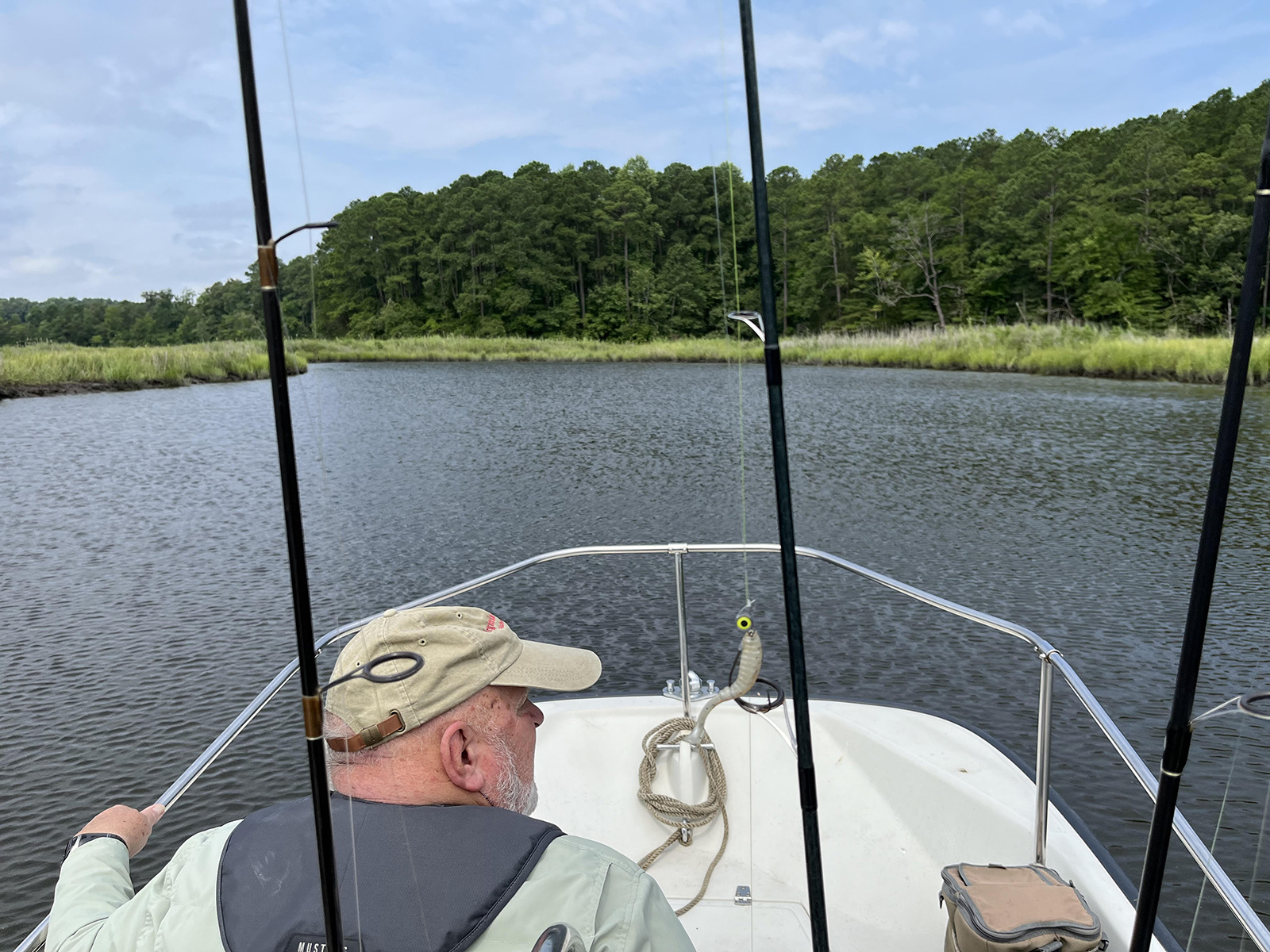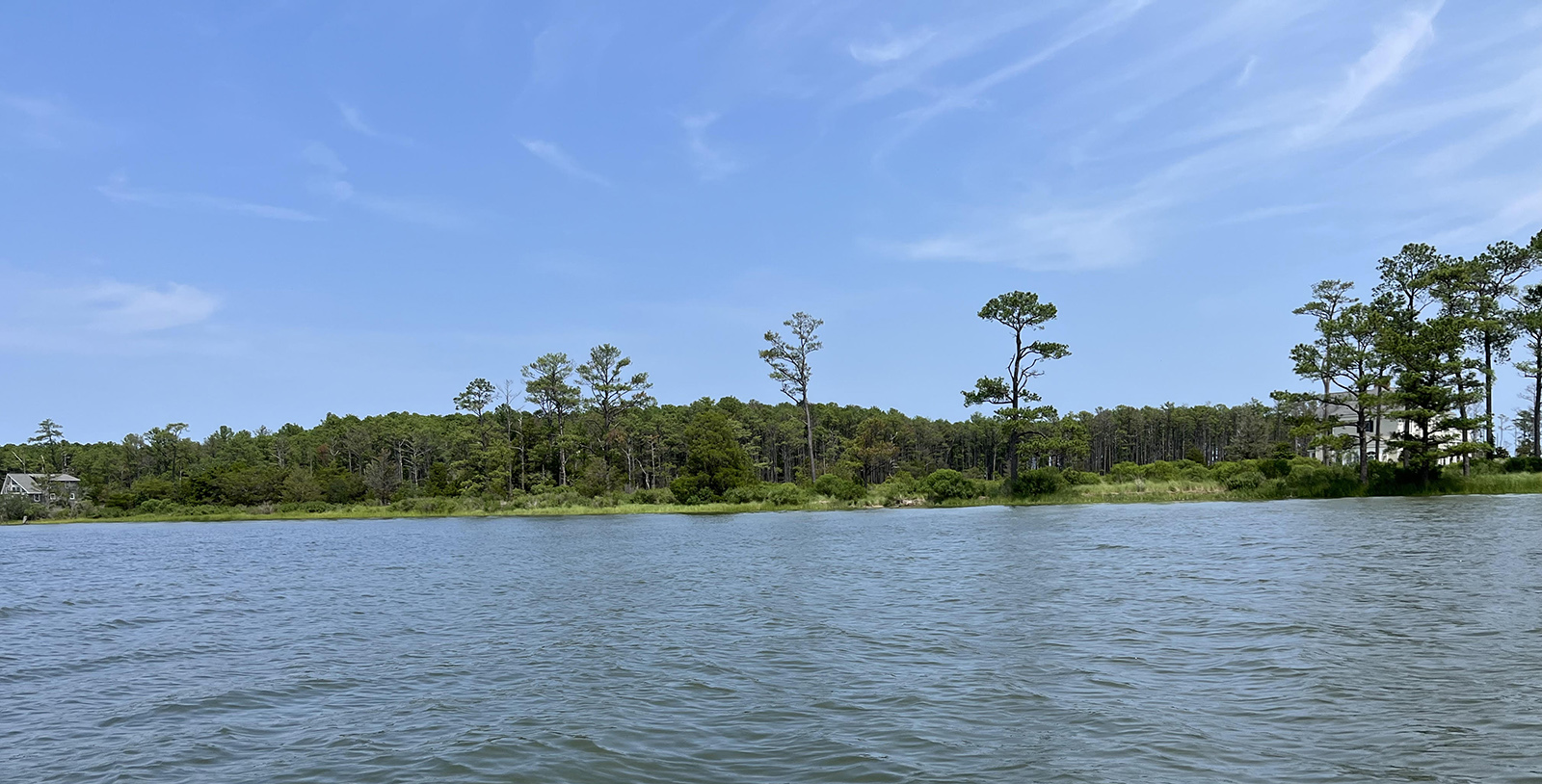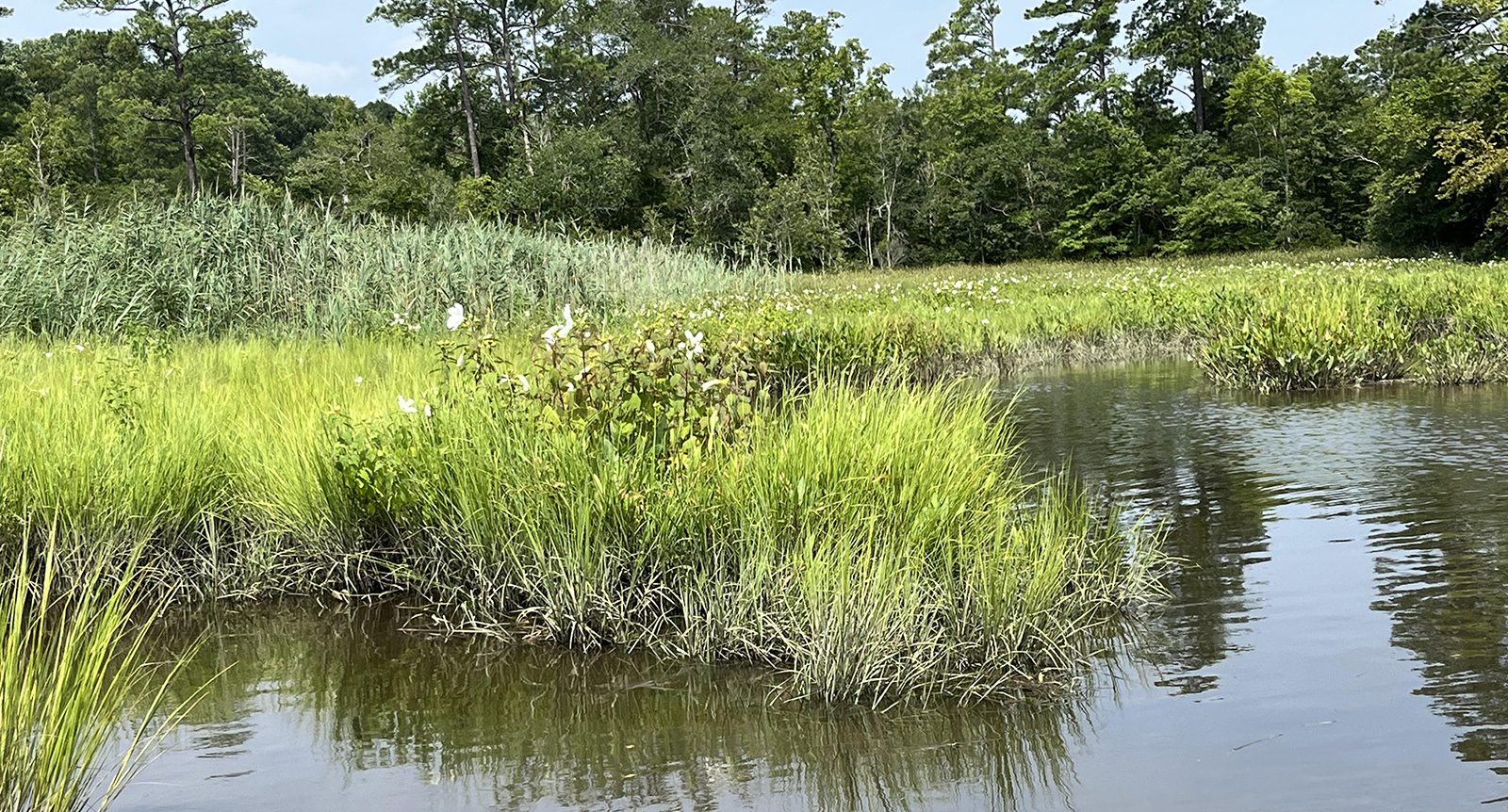By John Page Williams
Photos by John Page Williams
The Virginia Department of Wildlife Resources’ (DWR) Ware House Landing is a great access point for the rich waters of the Ware River and Mobjack Bay, easy to get to for people in Richmond and Hampton Roads. Located just two miles from Gloucester’s Main Street, it’s set up for launching both paddlecraft and trailered boats to explore both upstream and down.
For paddlers, both the upper Ware to the north (left) and Fox Mill Run to the west (right) beckon with channels narrowing to meander through salt marshes. The Ware gradually becomes fresh because the stream drains the lake at Beaverdam Park. A reliable source told us that puppy (red) drum feed all the way up into the marshes in the Ware’s narrows, as they there are full of fiddler crabs. On our late-summer visit, they were full of blooming marsh hibiscus. Fox Mill Run also meanders through marshes, rising west of Route 17 and flowing under Main Street. It’s navigable for paddlecraft for a little over a mile.

Heading into the narrows of Ware River.
Many of the people launching boats of either category are anglers fishing the legendary shallow waters downriver around Ware Point and further southeast to the Guinea Marshes off the mouth of the Severn River. The truth is, though, that there’s fish habitat all over these waters, especially because of their abundant meadows of underwater grasses. Recently, the Virginia Institute of Marine Science (VIMS) published its annual inventory for 2023 of Chesapeake grass bed in both Virginia and Maryland. “We are also seeing very encouraging expansion of eelgrass in the lower portion of the Bay, with the highest numbers ever recorded in Mobjack Bay,” said Dr. Chris Patrick, the professor who directs the annual survey.
A good complement to the VIMS map is Google Earth, which shows interesting patterns of sand ridges interspersed with grass beds along Mobjack Bay shorelines, especially around Ware Point. Note also that there are several tiny marsh creeks along that shore that drain through narrow openings. It would make a lot of sense to fish them at high water, just as the current starts to run out and predators gang up at those floating lunchlines.

A fishy-looking shoreline with grass beds inside Ware Point.
A close look at 2023’s inventory gives a good idea where to look for Mobjack Bay’s legendary speckled trout, since these predators love the crabs (especially peelers and softies), broad variety of small fish (we saw peanut menhaden and mullet), grass shrimp, and other critters that make the grass beds their homes. Predatory denizens include puppy (red) drum, rockfish, and occasionally flounder and bluefish. On our visit, a friend and I fished the grass beds with the usual gear: jigs with soft plastics, including one under a popping cork, and gold, weedless spoons.
Our “resource assessment” took place around mid-day, however, not prime time for a hot July. The grass was beautiful, a mixture of eelgrass and widgeongrass, but the only taker on our lures was a snapper bluefish on the popping cork’s jig. At summer sunrise, we would have expected specks and puppy drum. Late spring and fall are prime times to fish these flats. Flies like Clouser Minnows and Lefty’s Deceivers will work here in addition to lures cast with spin and plug tackle. One old trick for these waters is “floating a soft crab” by fixing it to an unweighted bare hook with a rubber band and flipping it out gently to drift across a grass bed with the current. Another current-related trick borrowed from Maryland anglers is to gather a couple of quarts of grass shrimp and chum them across a choice spot, with baited lines drifting in the flow. Specks might not be the only species to respond.
Other areas that attract fish in Mobjack Bay include docks, especially if they have grass beds nearby, and reefs established by the Virginia Marine Resources Commission (VMRC). One out in open water is a pile of concrete pipes established as part of the Commission’s Artificial Reef Program.
The other is a 30-year-old oyster restoration reef on the outer tip of the bar that juts from Jarvis Point, opposite the mouth of Wilson Creek. It’s marked by cautionary daymarkers at the ends. To visualize it, think of oyster shells (and oysters) piled like an inverted egg carton spread between the two markers and aged long enough underwater to have developed plenty of “live bottom.” It’s surrounded by grass beds, making it even more valuable as fish habitat. Approach it carefully, but it’s far enough underwater (between two and five feet) for careful navigation, especially on a drift or with a bow-mounted electric motor. Some of the piles have settled, but close examination with sonar will reveal shapes. A good approach is to scout it to get a sense of what is where and then leave it alone for a while before returning to fish it carefully. On our daytime visit, it was full of two-foot ribbonfish, which cheerfully grabbed the tails of our grubs with their fearsome teeth and fought us for them without taking our hooks. Again, different timing here will bring different results.
We saw plenty of life around the Ware River’s grass beds, including peanut menhaden and free-jumping striped mullet. Gloucester’s Ware House Landing is a great, readily accessible launch point for both paddlecraft and skiffs to Explore the Wild on the south side of Mobjack Bay.

Marsh hibiscus in bloom on the upper Ware River.
John Page Williams is a noted writer, angler, educator, naturalist, and conservationist. In more than 40 years at the Chesapeake Bay Foundation, Virginia native John Page championed the Bay’s causes and educated countless people about its history and biology.


